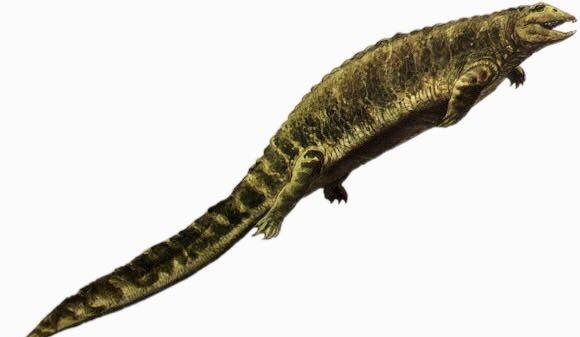
Name: Placodus
Age: Early to mid-Triassic
Location: Europe (Alpine region)
Size: Length 2 meters
The skull of " Plesiosaurus " suggests that it was a specialized carnivore whose teeth were fully adapted to feed on crustaceans. A row of blunt teeth in front of the jaw is used to grasp crustaceans attached to the rocks – bivalves and brachiopods. The posterior molars are broad and smooth and are used to grind shells (hence the name " Plesiosaurus " , meaning " flat teeth " ) . It even has huge milled teeth on its palate.
This terrible dentition is driven by powerful palate muscles that are able to pass through the temporal foramen on either side of its skull, providing a powerful bite to the jaw. Some modern sharks that feed on scleroderms, crustaceans, and sea urchins (such as the Australian tiger shark, aka the Port Jackson shark) have the same specialized teeth. They are so strikingly similar that many paleontologists, when the tooth of the dragon was discovered, thought they belonged to ancient sharks.
In addition to its fluidized body shape , " Plesiosaurus " had few characteristics of aquatic life. It has a short , stout neck , and its limbs expand to the sides of the body like primitive terrestrial reptiles , with the only swimming aids being webbing between five toes and a slender, flattened tail , possibly with fins.
Like all plesiosaurs, the thorax was protected by hard abdominal rib armor. It has a row of osteomatomas on its spine to protect its body. The torsocarp of later linformosaurs has a large degree of development and evolution.